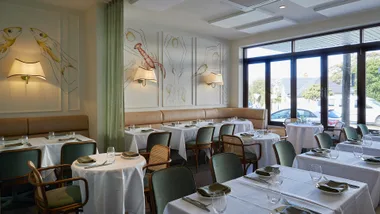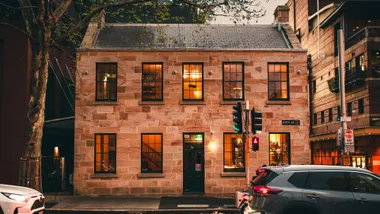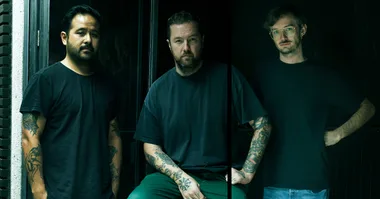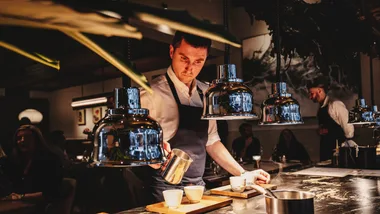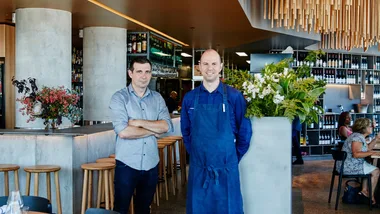Travel through the spectacular green rolling hinterland of the Northern Rivers region of NSW and you’ll find dozens of old village dairies that once played a crucial role in Australia’s booming commodity-butter trade with the mother country.
By the turn of the 19th century most of the thick, indigenous rainforest growing in the region had been cleared, and dairy farmers from the southern states moved in to take advantage of the warm climate and rich farming land. A new railway was built linking the Tweed Valley towns in the region, and Byron Bay boasted the largest cooperative butter factory in the southern hemisphere. But today the small family dairy farms have almost disappeared, the rail line is overgrown with weeds, and genuine local butter is as rare as hen’s teeth.
The good news is that Nimbin Valley Dairy is starting to change this sad state of affairs by adding a new cultured butter to its range of farmhouse products. Established by third-generation local farmers Kerry and Paul Wilson, the 120-hectare farm lies on the outskirts of Nimbin village, and has been producing fresh milk since 2007.
“Initially we were supplying all our milk to Norco, the local dairy cooperative, but a combination of low milk prices and drought forced us to rethink our future,” says Kerry. “We have great rainfall, lush subtropical pastures and some of the most fertile soils in the country, but circumstances were conspiring against us.”
They decided to change direction and start selling the farm’s goat’s milk direct to the public at local farmers’ markets. “It’s one of the quirks of Australian law that it’s actually legal to sell raw goat’s milk, but not raw cow’s milk,” Paul says.
They soon realised that their local customers wanted far more than just raw goat’s milk. A unique variety of farmstead cheese made from pasteurised goat’s and cow’s milk soon followed. Good milk is the starting point for all great cheese and the dairy uses only fresh milk from the farm’s pasture-fed dairy animals. This is left to sour naturally overnight before cultures and salt are added. “A total presence of mind and devotion to the moment is crucial,” says Paul, “because the slightest differences in the milk call for modifying the process every time.”
The naming of Nimbin Valley Dairy cheese reflects a similar simple, no-frills approach with “no numbers in the ingredients list, and no words you can’t pronounce”, he says. The mild creamy cow’s milk blue, for instance, is called Blue Cow, while its stronger cousin made from goat’s milk is Blue Goat.
Today, Nimbin Valley Dairy cheese is found at all the local farmers’ markets and also up and down the coast from Newcastle to Noosa. But Kerry says it’s been a long and hard road. “We could’ve just bought in milk and made some plastic cheese and sold to supermarkets but that’s not what we’re about. We’re farmers, so we wanted our own animals and we wanted to make traditional cheeses in a way that respected our land and the environment.”
The exciting news is that this year they began building a new farm dairy with plans to expand a production facility for cultured butter. Paul remembers milking the cows with his grandmother as a child. “I can still smell the dairy and the milk as it was separated into cream and skim milk. And the sound of the rhythm that grandma got going as she was milking the cows by hand is still embedded in my mind.” After that the cream went into the Sunbeam Mixmaster to make butter. “She had a wooden spoon to mix water through the butter to wash it. But it was so old there was only the stub of the spoon left on the end of the handle – most of it had worn away. And that butter was used for baking sponge cakes and whatever else we wanted.
“It was also used for barter trading with neighbours for vegies and things that we didn’t have. They were the hippies of the region before the hippies arrived in the ’70s.”
Nimbin Valley Dairy, nimbinvalley.com.au
Cheese in photo, clockwise from below: Nimbin Valley Dairy White Cow, White Goat, Monte Nardi, Sweet Goat, Blue Cow, Sainte Billie, Monte Nardi and Sweet Goat.



